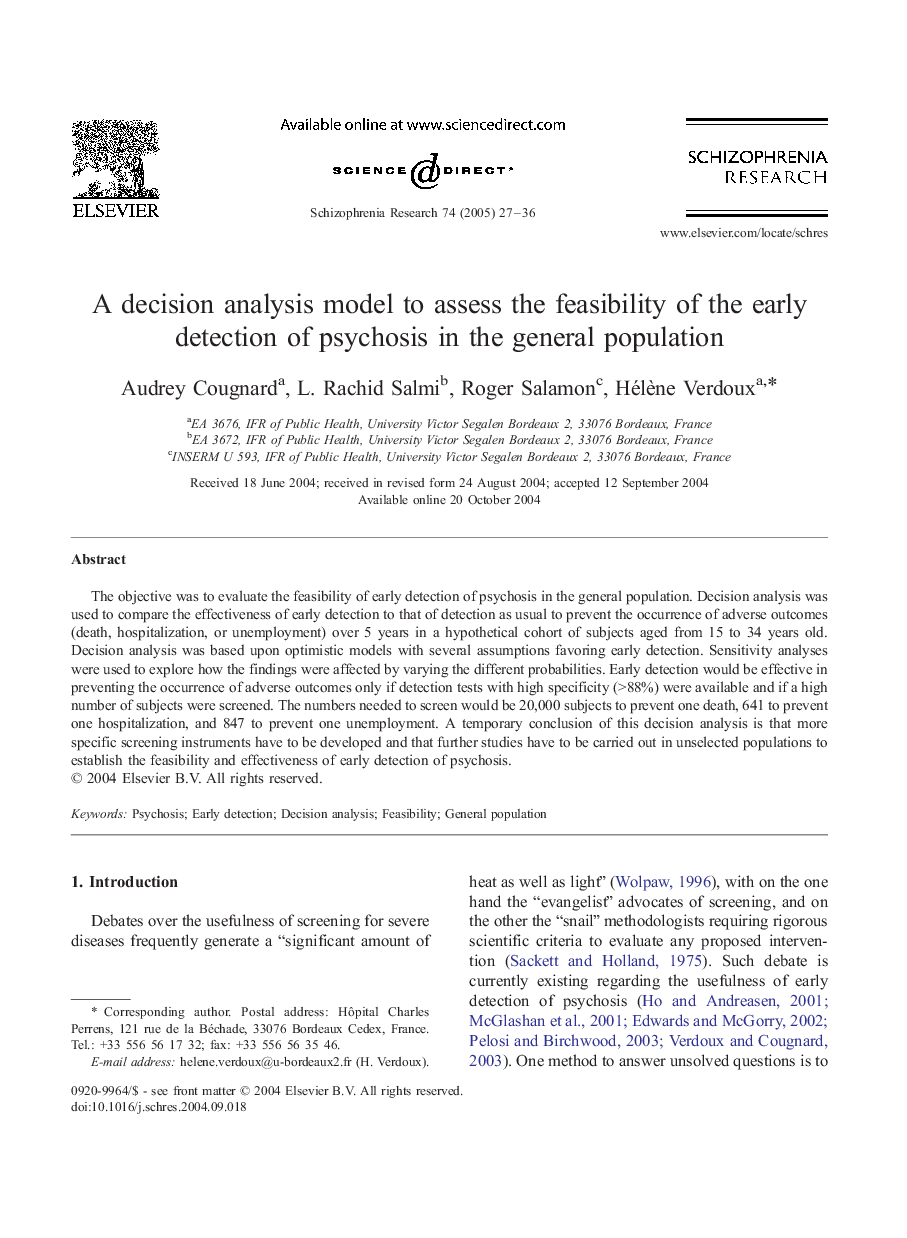| Article ID | Journal | Published Year | Pages | File Type |
|---|---|---|---|---|
| 10308408 | Schizophrenia Research | 2005 | 10 Pages |
Abstract
The objective was to evaluate the feasibility of early detection of psychosis in the general population. Decision analysis was used to compare the effectiveness of early detection to that of detection as usual to prevent the occurrence of adverse outcomes (death, hospitalization, or unemployment) over 5 years in a hypothetical cohort of subjects aged from 15 to 34 years old. Decision analysis was based upon optimistic models with several assumptions favoring early detection. Sensitivity analyses were used to explore how the findings were affected by varying the different probabilities. Early detection would be effective in preventing the occurrence of adverse outcomes only if detection tests with high specificity (>88%) were available and if a high number of subjects were screened. The numbers needed to screen would be 20,000 subjects to prevent one death, 641 to prevent one hospitalization, and 847 to prevent one unemployment. A temporary conclusion of this decision analysis is that more specific screening instruments have to be developed and that further studies have to be carried out in unselected populations to establish the feasibility and effectiveness of early detection of psychosis.
Related Topics
Life Sciences
Neuroscience
Behavioral Neuroscience
Authors
Audrey Cougnard, L. Rachid Salmi, Roger Salamon, Hélène Verdoux,
